
Simon Jenko was a Slovene poet, lyricist and writer.

Anton Aškerc was an Slovenian poet and Roman Catholic priest who worked in Austria, best known for his epic poems.

Fran Levstik was a Slovene writer, political activist, playwright and critic. He was one of the most prominent exponents of the Young Slovene political movement.

Ivan Hribar was a Slovene and Yugoslav banker, politician, diplomat and journalist. During the start of the 20th century, he was one of the leaders of the National Progressive Party, and one of the most important figures of Slovene liberal nationalism. Between 1896 and 1910, he was the mayor of Ljubljana, and greatly contributed to its rebuilding and modernisation after the 1895 earthquake.

Ivan Tavčar was a Slovenian writer, lawyer, and politician.

Navje Memorial Park, the redesigned part of the former St. Christopher's Cemetery, is a memorial park in Ljubljana, the capital of Slovenia. It is located in the Bežigrad district, just behind the Ljubljana railway station.
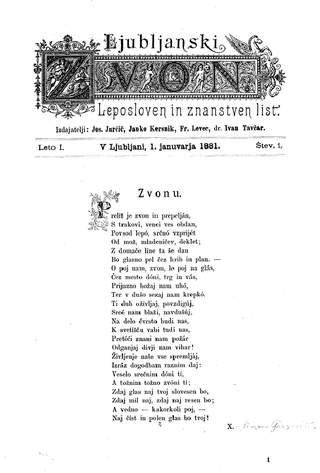
Ljubljanski zvon was a journal published in Ljubljana in Slovene between 1881 and 1941. It was considered one of the most prestigious literary and cultural magazines in Slovenia.

The Slovene Society is the second-oldest publishing house in Slovenia, founded on February 4, 1864 as an institution for the scholarly and cultural progress of Slovenes.
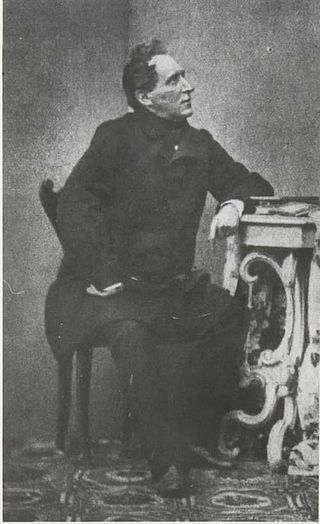
Janez Bleiweis was a Slovene conservative politician, journalist, physician, veterinarian, and public figure. He was the leader of the so-called Old Slovene political movement. Already during his lifetime, he was called father of the nation.

Anton Mahnič, also spelled Antun Mahnić in Croatian orthography, was a Croatian-Slovenian prelate of the Catholic Church and a philosopher who established and led the Croatian Catholic Movement. Mahnič served as the bishop of Krk from 1897 to his death in 1920.
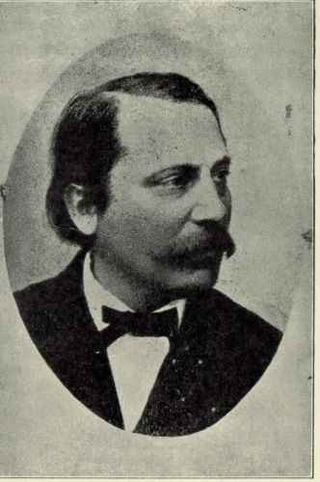
Karel Lavrič, also spelled Laurič or Lauritsch, was a Carniolan liberal politician and lawyer from the Austrian Littoral. He was of Slovene descent and was one of the most prominent activists of the Young Slovene movement. Together with the conservative Lovro Toman, he was considered among the most popular Slovene politicians of the 19th century. He was also called the 'tribune of Goriška'.
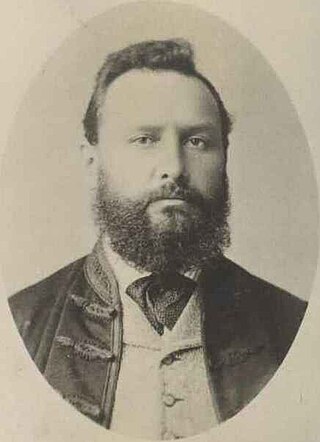
Josip Vošnjak was a Slovene politician and author, leader of the Slovene National Movement in the Duchy of Styria, one of the most prominent representatives of the Young Slovene movement.

Etbin Henrik Costa was a Slovene national conservative politician and author. Together with Janez Bleiweis and Lovro Toman, he was one of the leaders of the Old Slovene political party.

Kmetijske in rokodelske novice, frequently referred to simply as Novice (News), was a Slovene-language newspaper in the 19th century, which had an influential role in the Slovene national revival. For its first two years of publication (1843–1844) the newspaper's name was spelled Kmetijſke in rokodélſke novize, and from 1845 onward Kmetijske in rokodélske novice.

Old Slovenes is the term used for a national conservative political group in the Slovene Lands from the 1850s to the 1870s, which was opposed to the radical national liberal Young Slovenes. The main Old Slovene leaders were Janez Bleiweis, Lovro Toman, Luka Svetec, Etbin Henrik Costa, and Andrej Einspieler.

Janko Kersnik was a Slovene writer and politician. Together with Josip Jurčič, he is considered the most important representative of literary realism in Slovene.
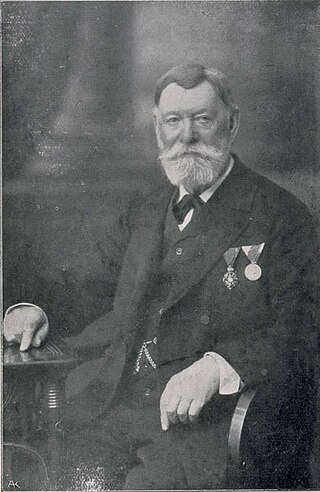
Luka Svetec was a Slovene politician, lawyer, author and philologist. In the 1870s and 1880s, Svetec was one of the most influential leaders of the so-called Old Slovenes, a national conservative political group in 19th century Slovene Lands. He was renowned as an honest and principled politician, and was praised for his decency and his straightforward, practical attitude to political questions and life in general. The Old Slovene leader Janez Bleiweis called him "a crystallized Slovene common sense". Because of his failure to take over the political leadership of the party after the death of its leader Janez Bleiweis, also called Father of the Nation, Svetec was mockingly referred in the press to as "Stepfather of the Nation".
Slovene minority in Italy, also known as Slovenes in Italy is the name given to Italian citizens who belong to the autochthonous Slovene ethnic and linguistic minority living in the Italian autonomous region of Friuli – Venezia Giulia. The vast majority of members of the Slovene ethnic minority live in the Provinces of Trieste, Gorizia, and Udine. Estimates of their number vary significantly; the official figures show 52,194 Slovenian speakers in Friuli-Venezia Giulia, as per the 1971 Census, but Slovenian estimates speak of 83,000 to 100,000 people.
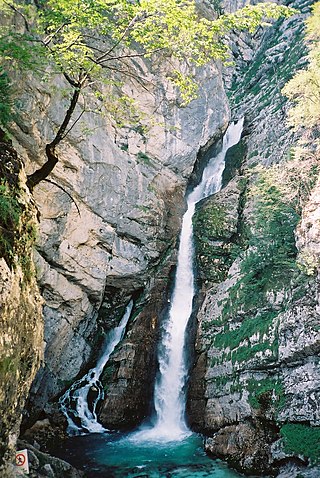
Slovene historical fiction in form of historical tale or historical novel is besides rural story the central national constitutive genre.


















